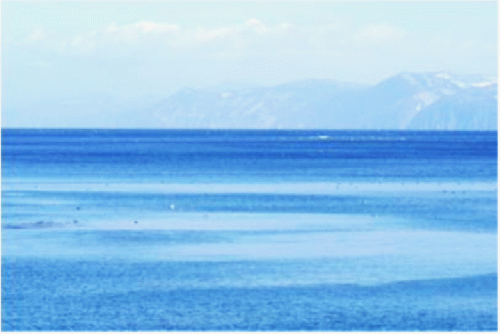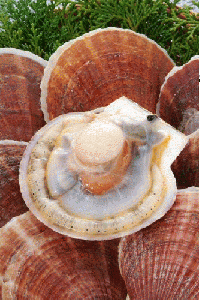Specifications
| Retail price(Japan) | 500 JPY (without tax) |
|---|---|
| Shelf life | 1 years after production |
| Storage temparature | Dry |
| JAN code | 4972988801251 |
| Place of origin (Pref.) | Aomori |
| Ratio of originated in Japan (WT) | 100% |
| Allergen info | Molluscs |
| Ingredients & Additives | Scallop (from Mutsu Bay in Aomori) |
| Supply period | all year |
| Restriction on sales | No restrictions |
| Size of a piece | 135mm x 200mm x 20mm |
| Weight of a piece | 50g |
| Size of an order unit | 420mm x 350mm x 140mm |
| Weight of an order unit | 2800g |
| Preferred Buyer type | Retail stores, Supermarkets, Food importers, Distributors |
| Target customer | A wide range of ages from children to seniors. |
| Suitable occasion | It goes well with the snack with drinks like tea, beer and liquor. |
| Other information | Trading style: Via trading company/wholesaler |
| Target country | (1)Korea Republicof, (2)Taiwan, (3)China |
Story of Aomori Scallops
One reason for this is because Hokkaido has the largest catch of scallops in the whole country followed by Aomori.
However, we have a strong confidence to state that "the largest amount of catch" is not equal with "the best flavor"!.
Instead, we know that Mutsu Bay scallops are the best and here are the reasons why.
Reasons why Aomori Scallops are the Best
The bay is also a destination for more than 200 rivers running through the region.
Because of the minerals delivered to the bay via the rivers, there is an abundance of plankton in the bay.
Feeding on these nutritious plankton, Aomori scallops grow big and savory.
Compared to scallops from Hokkaido, Aomori scallops are tastier with a softer texture and higher glycogen amount.
In addition, gentle wave motions in Mutsu Bay create the best nurturing surrounding for scallops as well.
(2) Unlike Aomori scallops, scallops from Hokkaido often come with roes.
This is because scallops from two areas are caught in different seasons.
In Hokkaido, scallops are caught during winter when roes grow big.
As a result, the size of roes is often almost the same with adductor muscles, which otherwise is supposed to be the tastiest part of a whole scallop.
On the contrary, catch of scallops in Mutsu Bay in Aomori starts in spring when roes finish emitting eggs thus packing more glycogen (also known as umami) in abductor muscles.
*Glycogen exists in muscles and pancreas.
They are sometimes referred to as animal nature starch polysaccharide.
(3) Some of scallops from Mutsu Bay are called "baby scallops".
It refers to scallops that are smaller than 1 year old.
Though they are small in size, they are still tasty.
What is more, for being small, they are softer, easier to eat and cheaper than bigger scallops!
Company profile
The current CEO of the company is the fourth generation since its start.
We started our business as a tofu manufacturer and developed into an egg-tofu manufacturer after the World War II.
It was in 1999 that we started developing products utilizing scallops, which are one of the main regional specialties of Aomori prefecture.
Currently, our lineup of scallop products includes 15 varieties, and all of them can be stored at room temperature for a long period of time.
Furthermore, we are planning to acquire HACCAP for our leading product, "Broiled Scallops (lightly salted)" this year in 2018.
| Company name | Kido Shokuhin Co., Ltd. |
|---|---|
| Type of organization | Manufacturer |
| Business description | Manufacture & sales of "Tamago-tofu"(steamed egg custard), "Chawan-mushi"(savory custard cup), tofu, noodles, scallop processed products, etc. Operating catering service, banquet place after wedding. |
| Title of representative | President Mr. Hirofumi Kido |
| Company address | 29-1 Shimo-kanita, Sotogahama-cho,, Higashi-Turuga-gun,, Aomori, 030-1308 |
| Factory address | 21-15 Shimo-kanita, Sotogahama-cho,, Higashi-Turuga-gun,, Aomori, 030-1308 |
| Date of establishment | |
| Number of employees | 21~50 or less |
| Company homepage | http://www.kidofood.co.jp/index.html |
| TEL | +(81) 174-22-2051 |
| FAX | +(81) 174-22-2612 |
| Business partners |

The scallops we use are exclusively Aomori-grown. Compared to scallops from Hokkaido, Aomori scallops are tastier with a softer texture and higher glycogen amount.
Scallops in Aomori grow in Mutsu Bay, which is surrounded by mountains in all directions.
The bay is also a destination for more than 200 rivers running through the region.
Because of the minerals delivered to the bay via the rivers, there is an abundance of plankton in the bay.
Feeding on these nutritious plankton, Aomori scallops grow big and savory.



